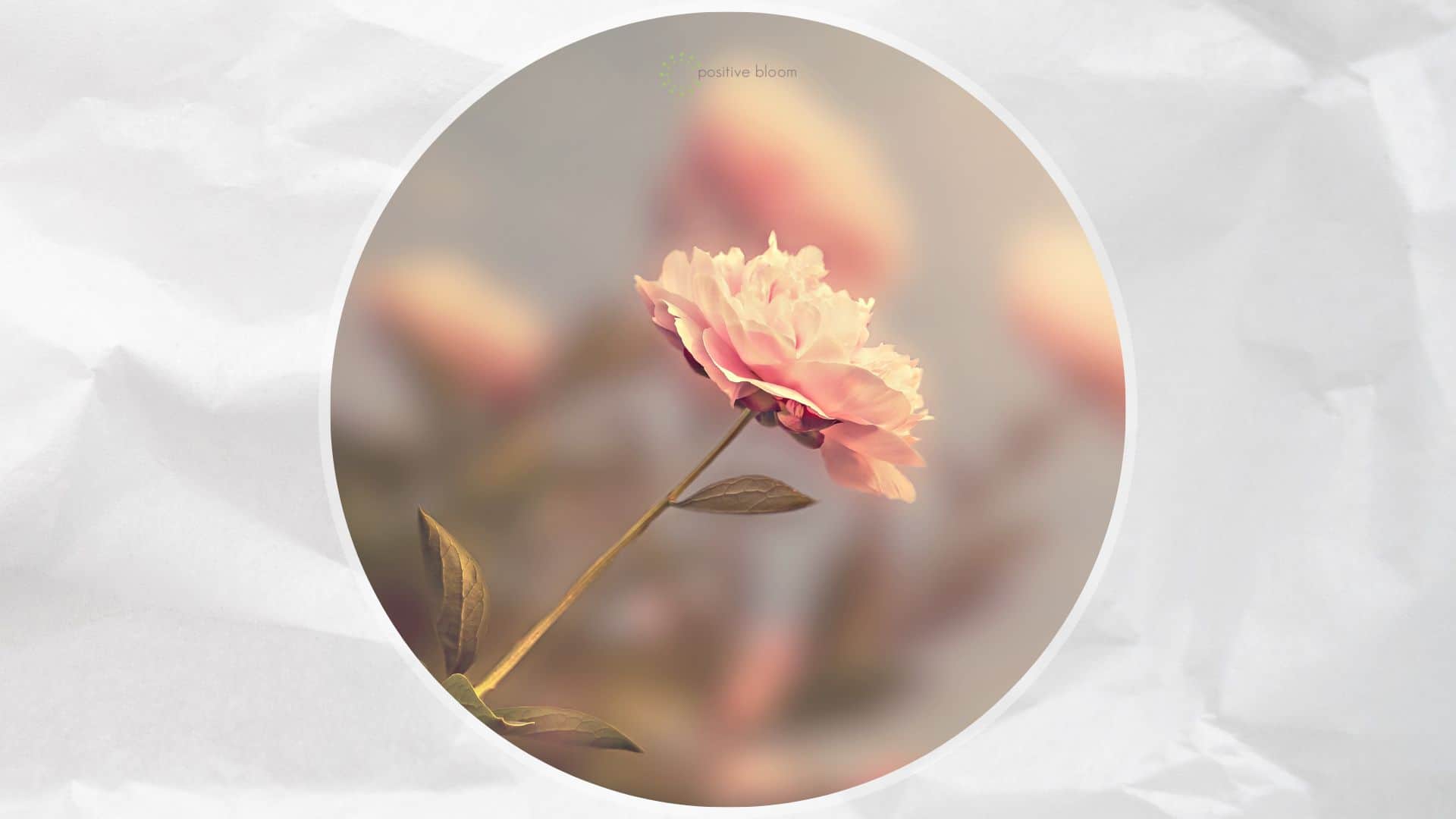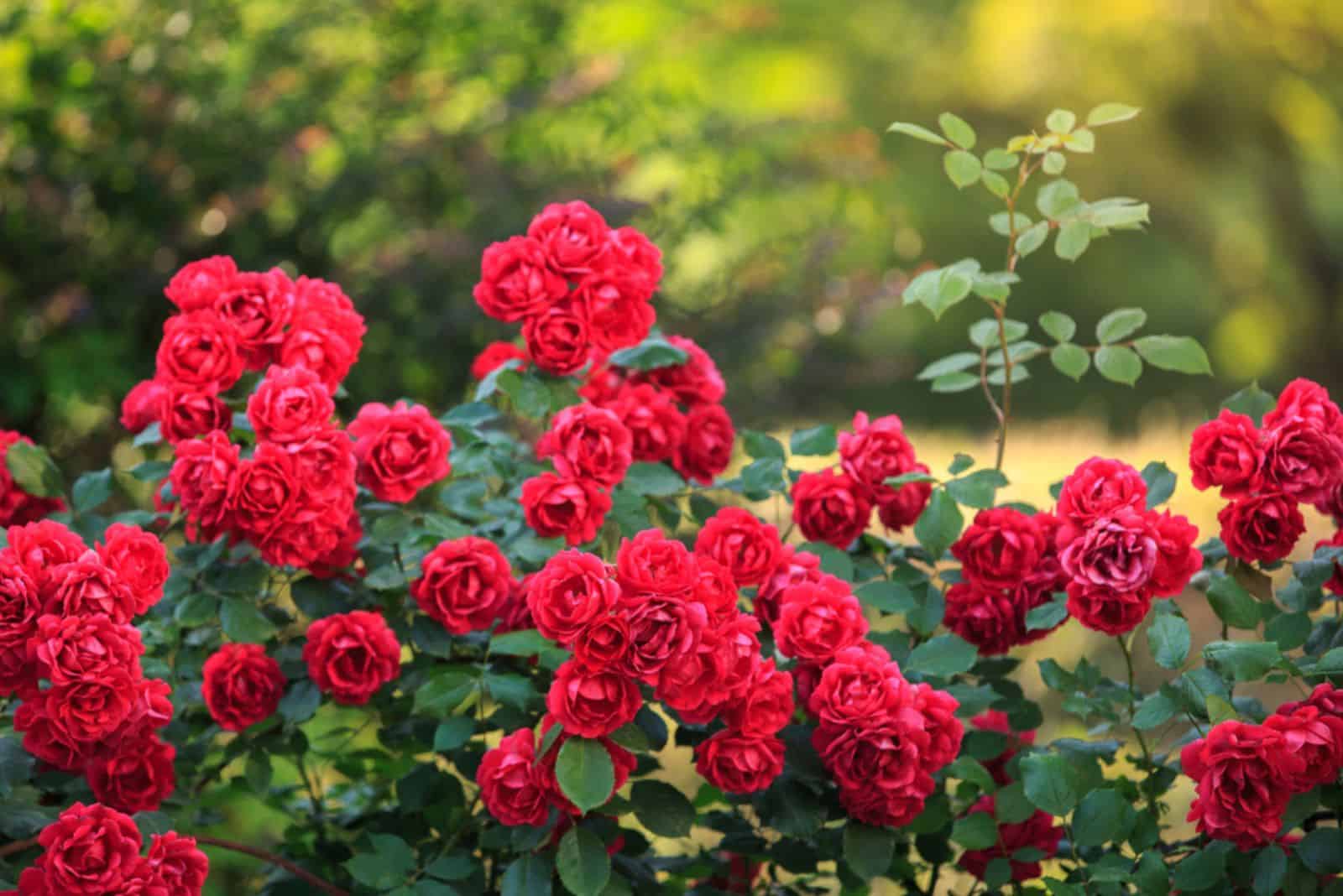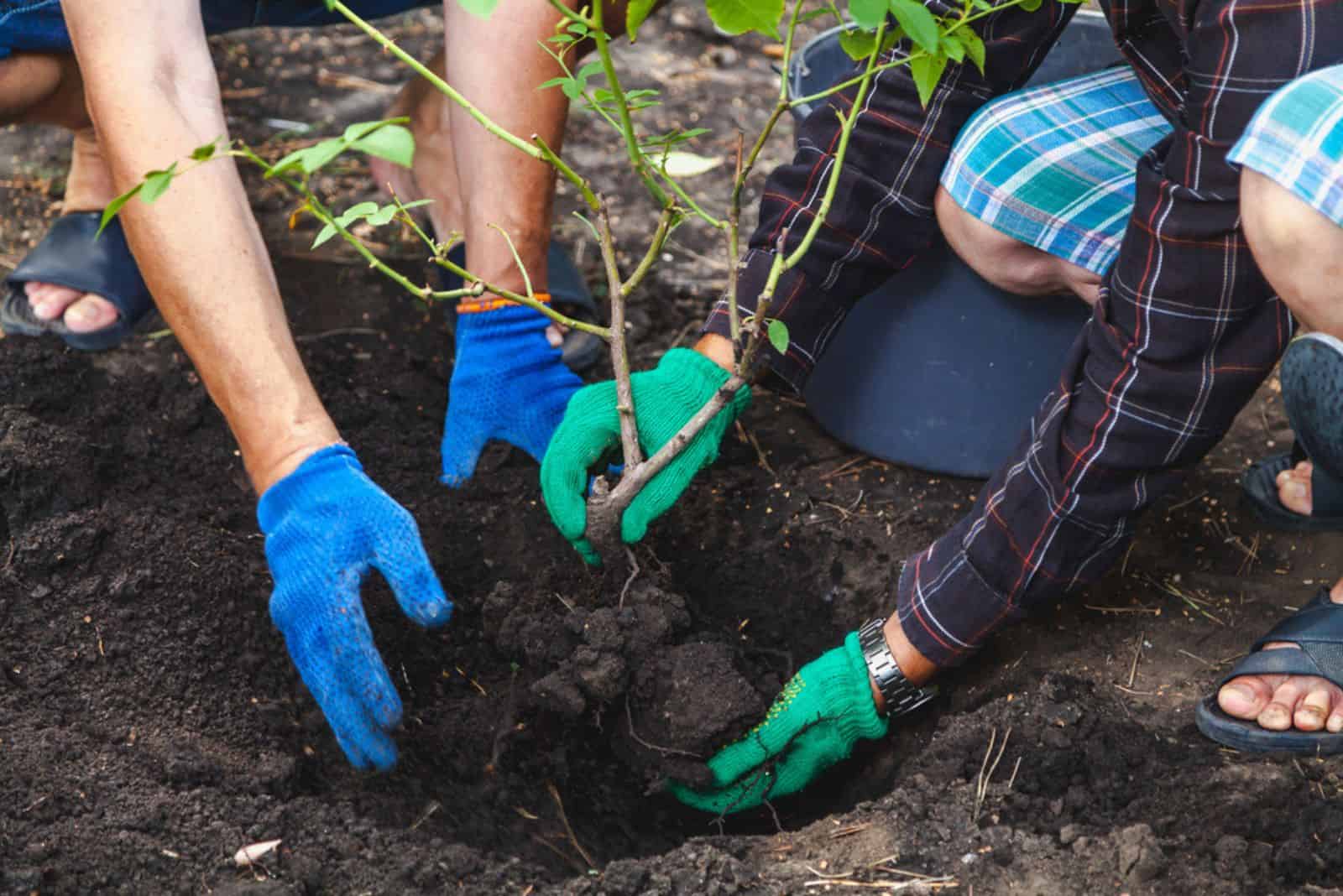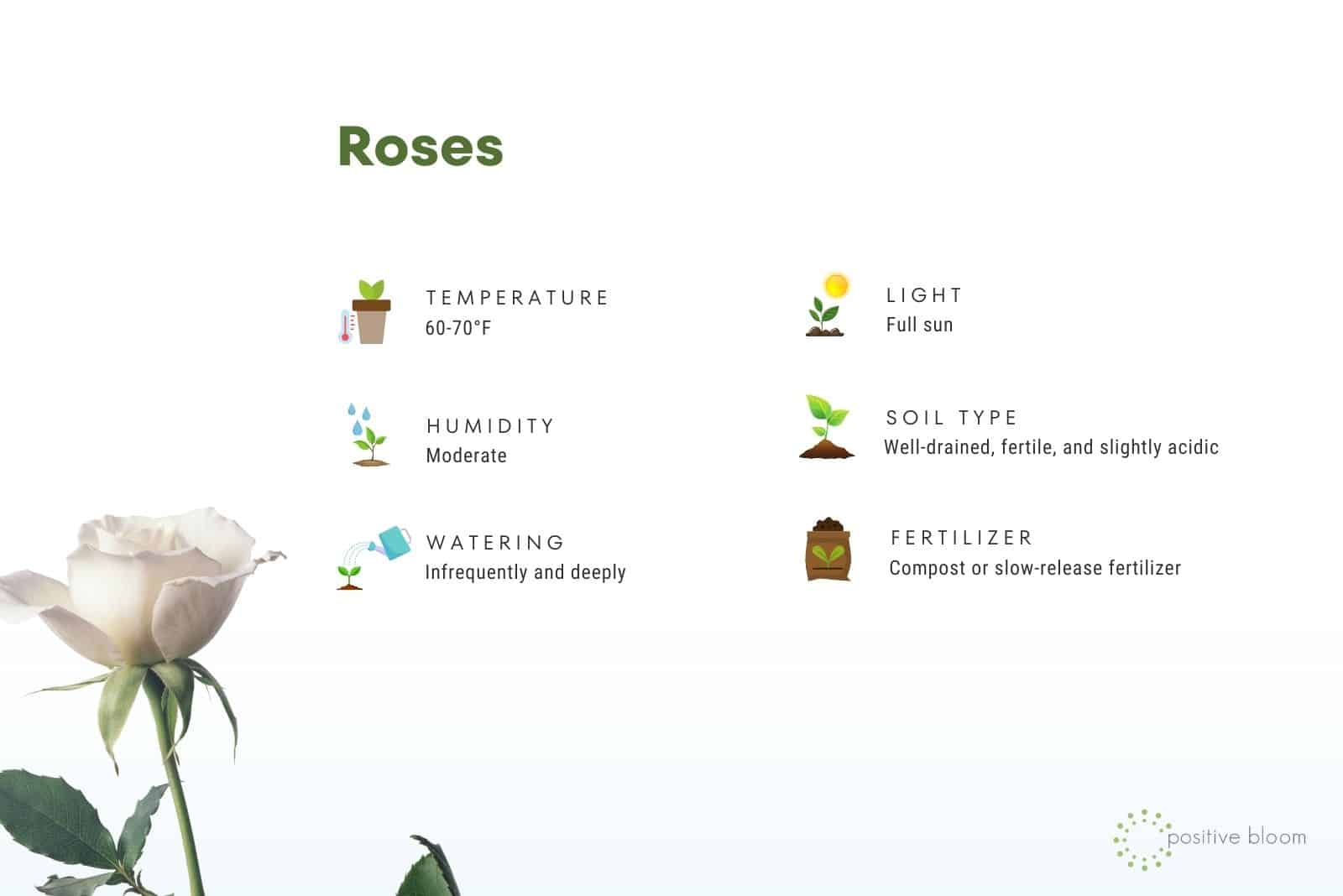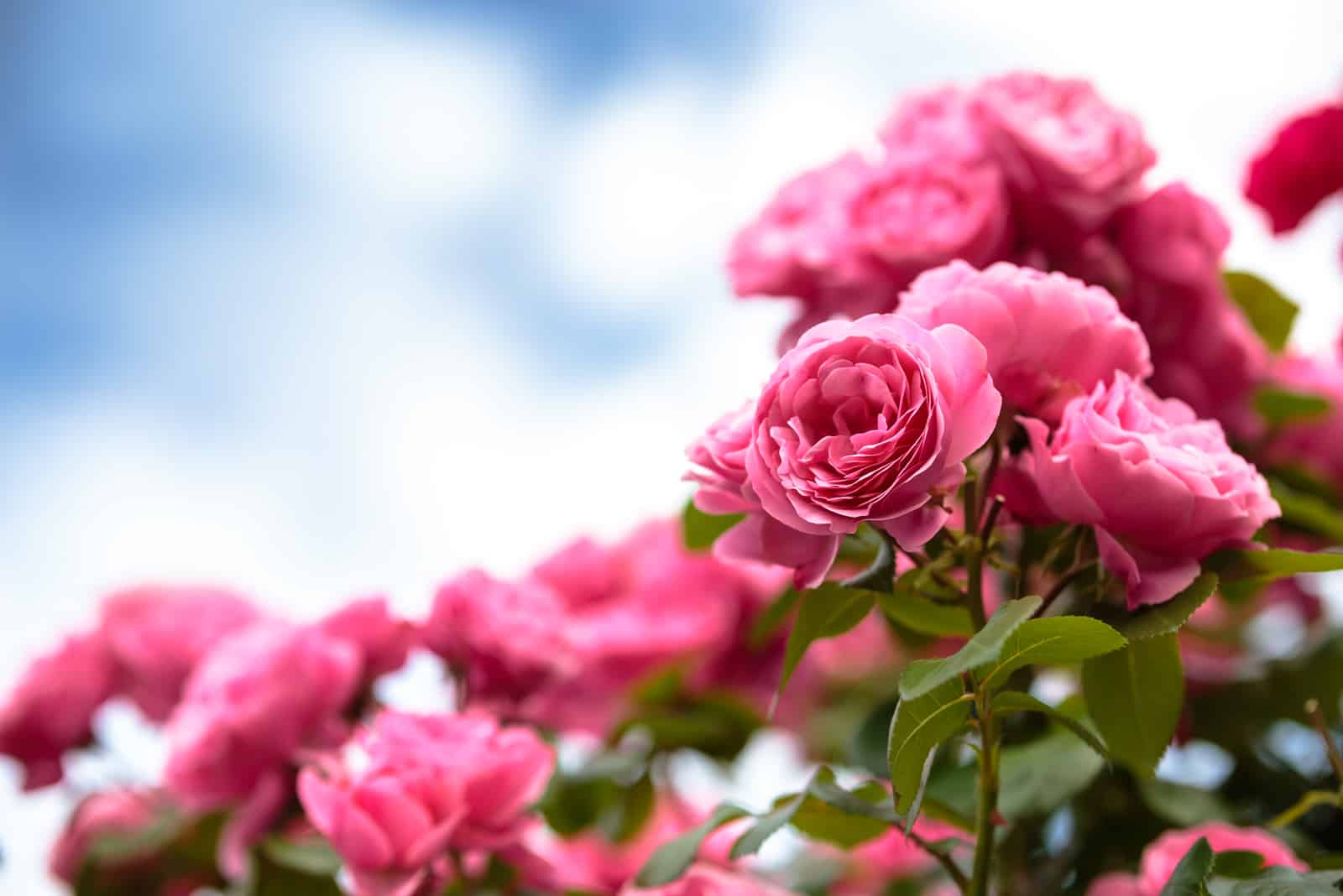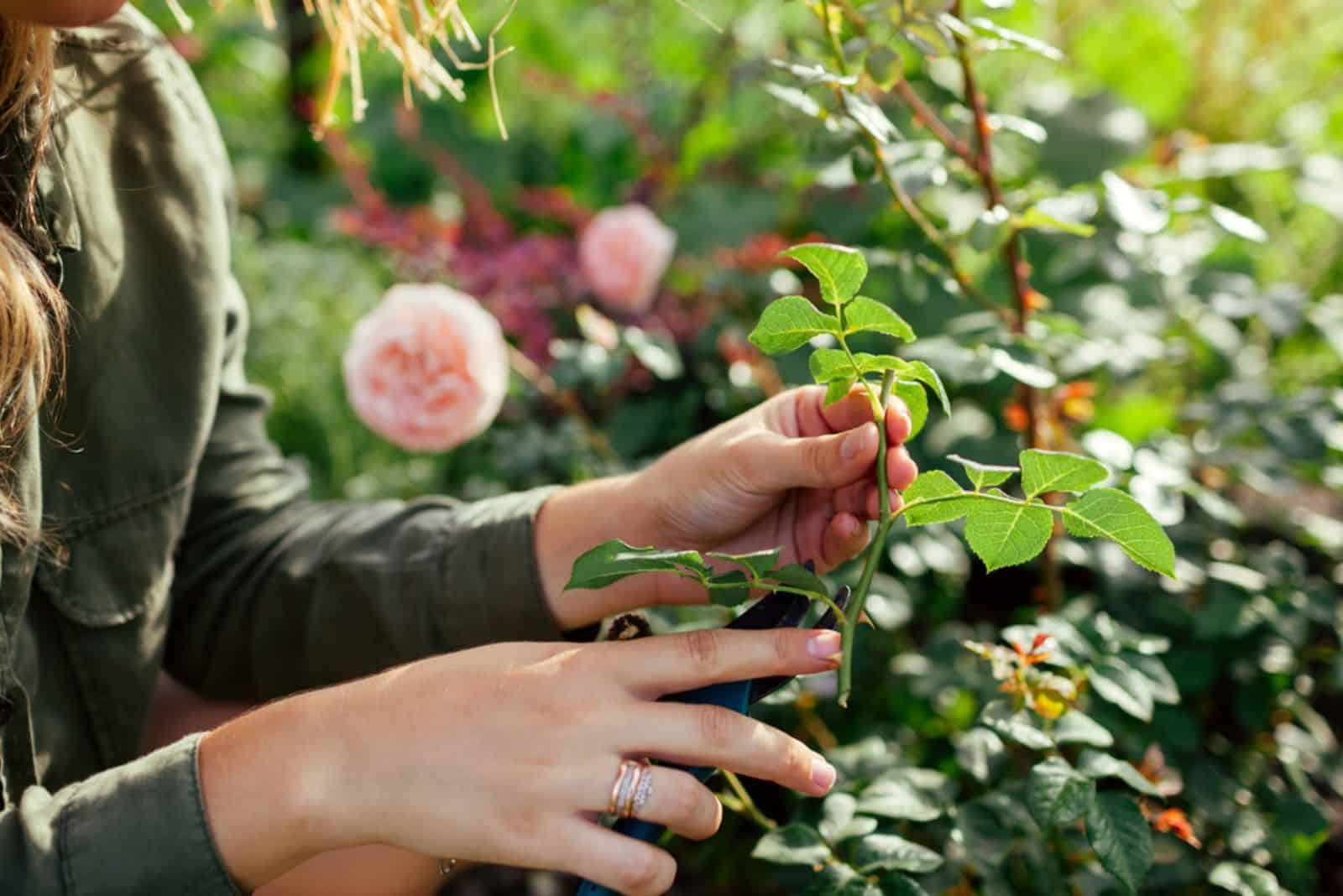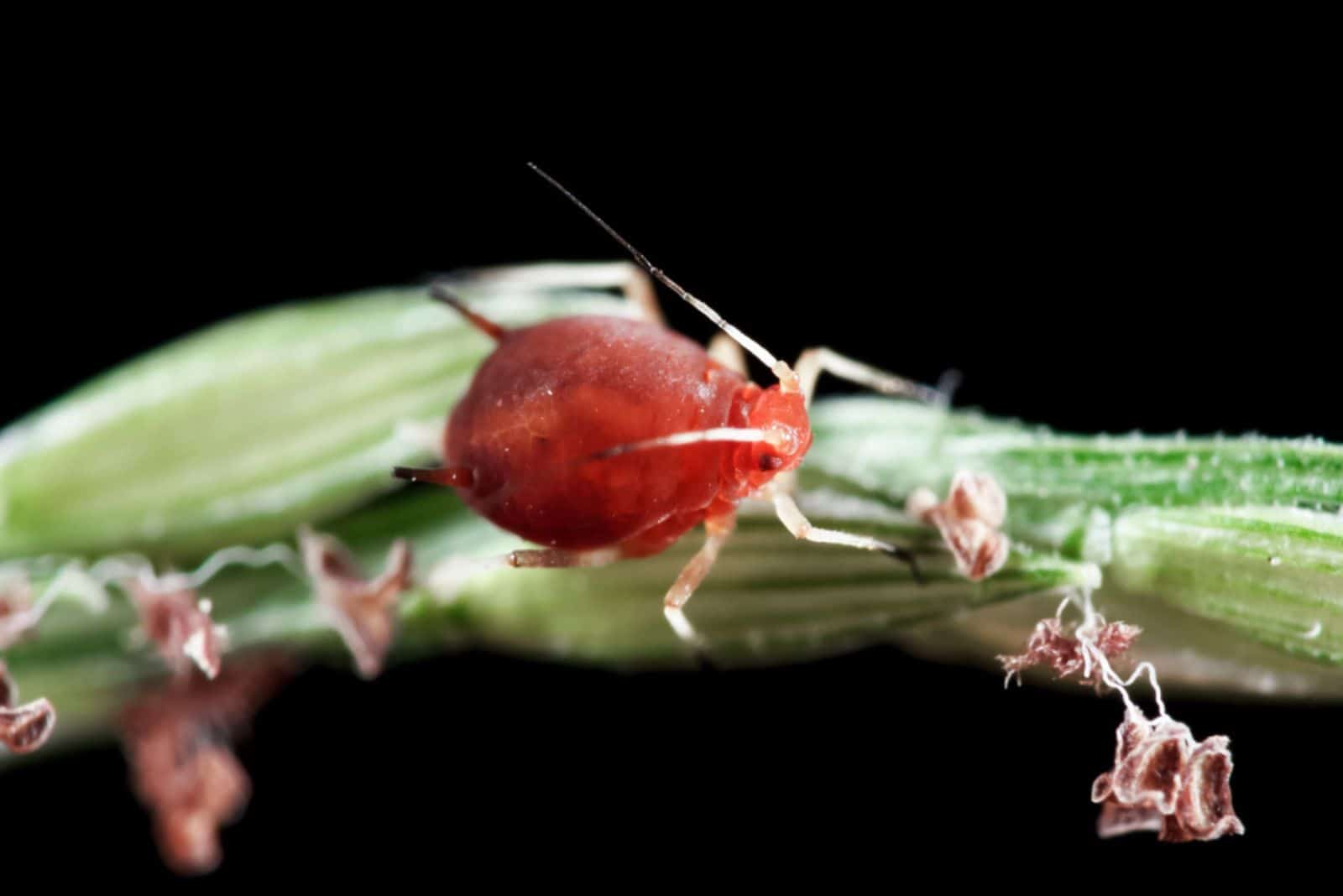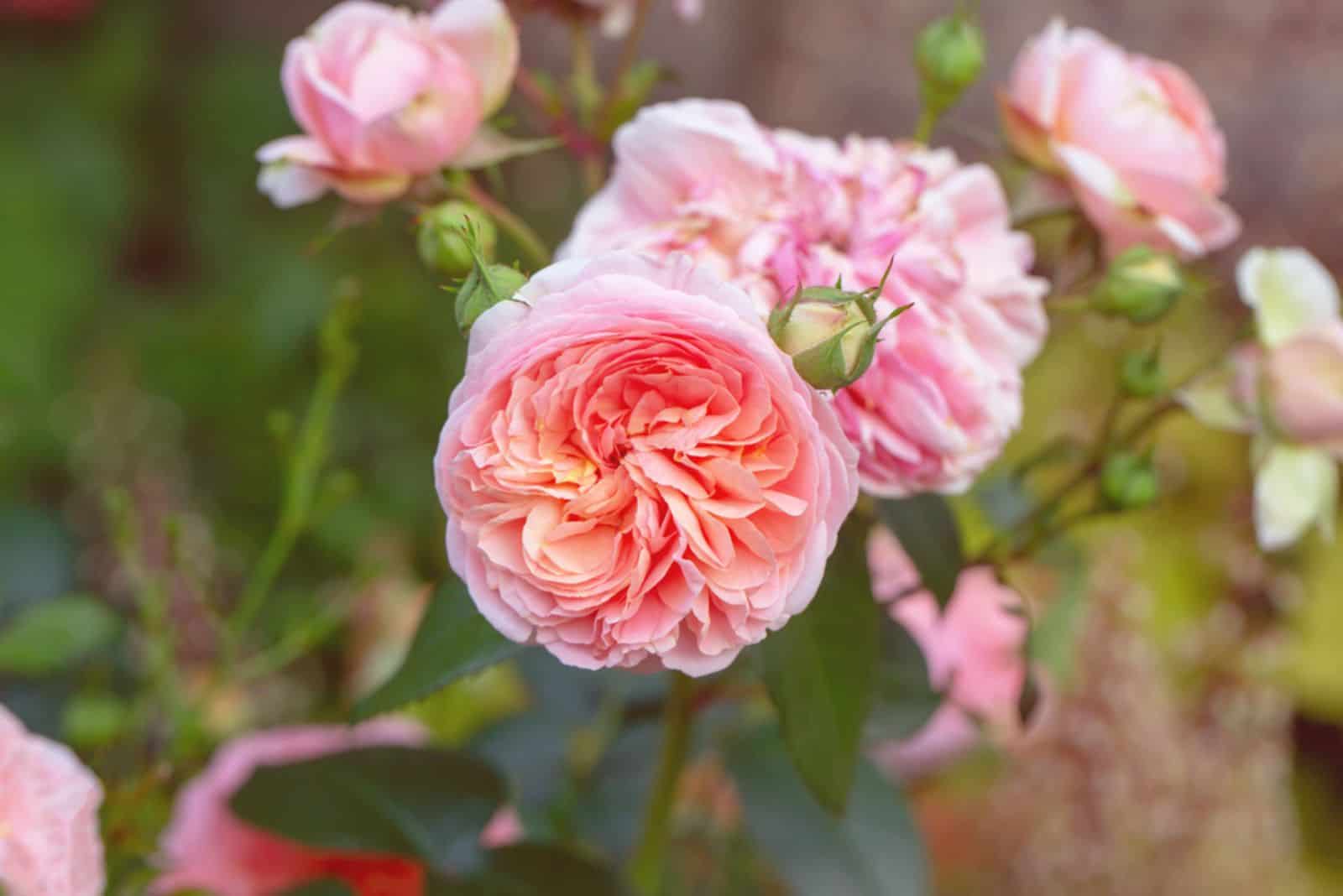A rose garden is one of the most fulfilling things that a gardener can grow, although it does require a bit of maintenance.
They need regular pruning, plenty of sunlight, a well-draining growing medium, etc., although knowing how to plant them is also important.
Furthermore, you cannot grow all varieties of roses in the same way. For instance, climbing roses need a trellis to reach their full glory, whereas shrub roses don’t.
But don’t worry, we’ll discuss all you need to know about how to grow roses, plant them, care for them, and even some common issues you might encounter.
And at the end, we will bring you some popular rose varieties you’ll definitely enjoy.
Now, let’s get started!
How To Grow Roses
When growing roses, it is important to choose where to do so; in the ground, in containers, on a trellis, etc.
Below, you can find the most popular types of roses and some tips and tricks for growing them.
How To Grow Climbing Roses
Climbers need a stake, trellis, or fence to grow properly. You can train them into lovely arches, and use them to decorate pergolas and columns, house walls, etc.
You can plant them in small gardens as they can simply climb up and save some space.
Some species can grow quite tall and add height and texture to your landscape. And if you want to help them reach their full potential, understanding the rose blooming stages will help you implement proper care at the right time (just like with all other species).
How To Grow Shrub Roses
These roses are hardy and low-maintenance compared to other varieties. They don’t require staking, unlike climbers, and are self-cleaning, which means they drop their spent blossoms and you don’t have to prune them.
Shrub roses have a mild fragrance, and you can plant them all over your garden; you can plant them in majestic containers, turn them into a hedge or a border, or even train them as climbers since some species can get 6.5 feet tall.
Most of them are repeat-blooming, so you’ll be able to enjoy their colors throughout their growing season.
How To Grow Ground Cover Roses
These species are famous for their spreading habit and low growing height, typically reaching a height of 2-3 feet and spreading 4-5 feet wide. They are ideal for covering large areas of ground, banks, and slopes, or as a low hedge.
Some are disease-resistant and self-cleaning, which makes them a low-maintenance choice for your garden.
And if you use them as ground cover, they’ll prevent weed growth and keep your other plants safe.
How To Grow Rambling Roses
We frequently mistake ramblers for climbing roses, although they’re not the same. Rambling roses grow more intensely, have smaller flowers, and blossom once a year, unlike climbers.
Ramblers are fast growers and require plenty of room, so they’re perfect for larger projects, such as training them onto trees, covering unsightly parts of the yard, etc.
One of the things we love about these species is that you can train them to grow in a particular direction; just tie their canes to support them.
How To Grow Patio Roses
Patio roses are smaller species that fit into compact containers. They require looser potting soil than other species, and cannot live as long.
However, you can easily maintain their growth, and they’re perfect for patios, balconies, borders, and small gardens.
How And When To Plant Rose Bushes
There are two main ways of planting roses: using containers and bare-root plants. Either type has its benefits, so it’s up to you to decide which one fits your needs.
And once they produce blossoms, you can take cut flowers from both and enjoy them for a long time since roses can go a long time without water.
Planting Bare Root Roses
These roses don’t have soil around their root system. Growers pack them in bark, peat moss, or some other soilless medium, and secure them in plastic so that they can retain moisture and endure shipping.
They are cheaper than potted ones and available during the dormant season, so their planting time is only from October to April (at most).
When planting bare root roses, first place them in water for about 1-2 days before planting. Then, choose a location that gets at least 6-8 hours of sun each day. Add some organic matter into the soil and remove any debris from it.
Make a planting hole deep enough to fit the rose’s root system. Spread the roots into the hole, ensure that the place where the canes and roots meet is about 2 inches below the ground, and fill everything with more soil.
Gently stomp it to remove air pockets, water the new plant thoroughly, and place some mulch to keep the roots moist.
Here are some more planting tips:
Planting Container Roses
Nurseries grow these roses in containers, which makes them a bit more expensive, but they’re the best choice for beginners since they quickly establish.
These roses are also available at any time of year so you can plant them either in spring or fall. If you live in a warm region, you can plant the container-grown roses about a month and a half before the first frost, or you can wait until the last spring frost is gone.
Again, choose a location with plenty of light throughout the day and amend the garden soil with some compost or manure.
Make a planting hole a bit larger than the planter the rose is currently in. Carefully remove the rose from its pot, loosen the roots, place it in the hole, and backfill it with more soil.
Water the new plant deeply and mulch it to suppress weed growth and retain moisture.
This video has some amazing tips for planting container-roses:
Rose Care Guide
After you plant roses, it is essential to provide them with proper care to keep them healthy and avoid fungal diseases, pest infestations, etc.
These plants thrive in full sun conditions and well-draining soil, but they also require additional watering if you live in an arid region, good air circulation, and regular feeding.
We’ll discuss pruning roses since that is another vital part of their care. Below you can also learn how to repot these plants, propagate them, and more.
Light Requirements
Roses need a at least six hours of direct sunlight per day to thrive. Therefore, they prefer full sun, although they can tolerate some partial shade, especially in hot climates.
However, if you expose your roses to too much shade, they won’t produce many blossoms. On the other hand, too much direct light can lead to scorching of the foliage, so it’s vital to find the right balance.
The optimal conditions for rose bushes are on the eastern or southern parts of the garden. Western ones get too much light, so you should protect your plants from the harsh afternoon sun.
Water And Humidity
One of the most common causes of wilted rose plants is inadequate watering. You should water these bushes infrequently and deeply so that they can develop deep root systems.
Generally speaking, roses require about an inch to an inch and a half of water throughout the week through rainfall or supplemental watering.
Therefore, if you live in a rainy region, you might not need to irrigate this plant at all.
Furthermore, potted roses require more frequent watering since pots and potting mediums drain more quickly. It’s best to always check the top few inches of the soil in which you grow this plant, and if it’s dry, you can water your plant.
Lastly, one of our favorite know hows: irrigate these plants in the morning or late afternoon, and they’ll thrive.
If you water them in the evening, you risk the spread of fungal diseases, and if you irrigate them in midday and early afternoon, all the moisture will evaporate from the soil.
Humidity
Roses thrive in moderate humidity and need good air circulation to remain healthy. High air moisture can lead to fungal diseases such as powdery mildew, while low humidity levels can cause leaves to dry out and become crispy.
Proper airflow allows the leaves and flowers to dry out, reducing the risk of infections. Therefore, it is important to plant these shrubs about 2-3 feet apart.
Finally, always water your roses at the base of the plant and early in the morning so as to allow the foliage to dry out throughout the day.
Temperature
Roses prefer temperatures between 60-70°F for proper development and blooming. Too high or low temperatures can stress out the plant, leading to reduced flowering or even death.
These plants can tolerate some heat, but temperatures above 90°F can lead to flower wilting and leaf burns. Finally, freezing temperatures can damage or even kill the plant.
Of course, there are various types of roses out there with different temperature tolerances. For instance, hybrid tea roses cannot handle the cold very well, while shrub roses are famous for being cold hardy.
These plants are also sensitive to sudden temperature changes, so you should protect them from strong winds, direct sun in hot climates, and provide some frost protection during harsh winters.
Soil And Fertilizer
The best growing medium for roses is well-draining, fertile, and with a slightly acidic soil pH level (6.0-6.5).
Before planting roses, amend the substrate with well-rotted manure, compost, or humus to add more nutrients, and increase water retention and drainage.
And if your garden soil is heavy clay, you should add some horticultural grit to make it more draining since these plants cannot handle being waterlogged.
Finally, proper pH levels allow for the optimal uptake of water and nutrients, which is why you should measure it before planting. And if it’s too alkaline, you can always add some garden sulfur.
Fertilizer
If you want to have lots of flower buds on your rose bushes, you should feed these plants throughout their growing season.
Apply cow manure or compost in early spring, or use a slow-release fertilizer. Apply a plant food rich in nitrogen in spring to encourage vegetative growth, and then switch to a variety with lower nitrogen and higher phosphorus to promote blooming.
Furthermore, if you’ve planted bare root roses, wait until the leaves appear before you start feeding them. When it comes to container-grown roses, you can feed them right away.
Coffee grounds are good for roses because they are rich in nitrogen and slightly acidic, but they shouldn’t be the only fertilizer you use since these plants require phosphorus to produce ample blossoms.
Finally, fertilize your roses until late summer or early fall so that they don’t produce new growth before winter. (New rose stems are weak and wouldn‘t be able to survive harsh winter conditions).
Propagation
There are many rose propagation methods, including grafting, layering, taking rose stem cuttings, and planting seeds.
You can take both hardwood and softwood cuttings, although the latter root faster, so we’ll discuss this technique.
Ensure that your rose bush is hydrated before taking propagation material. Then, take a softwood cutting that’s around 4-6 inches long with at least 2-3 nodes. Put the cuttings in water and away from direct light to help them last longer.
Afterwards, remove the bottom leaves, flowers, and a bit of green skin at the bottom (but not all around the rose stem) to encourage root development.
Add some rooting hormone, plant the cutting in well-draining soil, and water them thoroughly. Put a humidity dome or a plastic bag over it to increase air moisture, then place it in a spot with indirect light.
Lift the dome or plastic bag from time to time if they don’t have holes, and water the cutting only if the potting mix dries out.
Your plant can develop roots in as little as a few weeks, but most take 1-2 months. If some cuttings turn brown or drop their leaves, you should remove them at once as they won’t propagate.
Leave the healthy cuttings to develop, and in about 9-12 months you can transplant them into your garden.
Deadheading And Pruning Roses
Deadheading roses is a great way of making more room for new flowers in repeat-blooming species. However, there are many varieties that self-clean, and you can always get those if you’d like to avoid this additional task.
Unfortunately, pruning roses cannot be avoided, though it is beneficial and will keep your plants healthy for many years to come.
The best time to trim these plants is in spring once all danger of frost is long gone. First, remove any leaves that have, somehow, survived the winter. Then, get rid of dead wood. Trim all the canes that don’t grow upright.
Continue with weak new growth, and finish by pruning the remaining rose stems about half an inch above the buds where leaves would connect with stems.
Also, roses will seal themselves, so you don’t have to buy any additional products to help you with this. All that’s now left is to remove the trimmed stems and resume plant care.
Common Issues With Roses
You can find many Instagram rose quotes, but none of them talk about infested or infected plants. It is essential to care for these magnificent bushes properly to keep them healthy.
Pests generally tend to attack weak and unhealthy plants, so if you meet these plants’ requirements, you won’t have to deal with them.
Pests (Aphids, Mites)
The most common pests that infest roses are spider mites, aphids, and Japanese beetles. It is crucial to deal with this issue as soon as you notice it since insects can quickly spread onto your other plants.
The good news is that you can get rid of most of these pests by using neem oil or pesticides if the infestation has gotten out of control.
However, if you want to keep your yellow or red roses safe to begin with, you can interplant them with some other species that repel these pests and attract aphids (such as thyme, marigolds, or alliums) and meet their watering, lighting, and fertilizing requirements.
Diseases
There are quite a few infections that can befall these plants, but the most common rose diseases are black spot and powdery mildew.
These are fungal infections that thrive in warm and humid environments, so you should avoid wetting the foliage of your roses, and increase air circulation by pruning.
Let’s learn more about the symptoms and treatments for these diseases.
Black Spot
The main symptom of this disease is dark, purple-black markings on rose leaves. They quickly enlarge and the yellow discoloration usually follows. The foliage quickly drops and the plant gets weaker and weaker, especially if the disease reoccurs.
As soon as you notice these signs, you should remove the infected parts and dispose of them by burning or throwing them in the trash.
Afterward, prune your roses to prevent the recurrence of the infection, and use a fungicide aimed at black spot come spring.
Powdery Mildew
Powdery mildew isn’t as dangerous as black spot, but it will reduce the roses’ ability to photosynthesize.
The symptoms of this disease are slight curling of the foliage and white powder on the leaves. Luckily, you can easily avoid it if you always water your roses in the morning at the base of the plant.
And if your plant does get infected with this disease, you should spray it with a fungicide.
Grow Different Types Of Roses
Before we finish off this article, let’s discover some amazing varieties of roses suitable for any garden design.
David Austin (English roses) – A British breeder, David Austin, first introduced this species, hence the name. They have the shape and fragrance of an old rose variety, but are repeat-blooming and more colorful.
Floribunda roses – This variety is a repeat bloomer, just like hybrid tea roses, but is somewhat shorter and lusher. Unlike hybrid teas, the floribunda produces small clusters of flowers and usually has no scent.
Grandiflora roses – If you want a robust rose that bears hybrid-tea-rose-flowers, only larger, then this is the species for you. It is even on the list of Italian roses, among floribundas, hybrid teas, ground cover roses, etc.
Hybrid tea roses – This is a type of roses that has long and pointed flower buds, usually one per stem. They bloom more than once a season and have a mild fragrance.
Miniature roses – These compact varieties are no more than two feet tall, so they’re perfect for containers and small spaces. They tend to be hardier than other species, and will rebloom abundantly.
Polyantha roses – The tiny bushes of polyantha roses are perfect for planters and patios. They’re usually no more than three feet tall, but have great and bushy flower clusters. They even bloom more than once a year, so who wouldn’t want to grow them?
Species roses (wild roses) – This variety grows into a large bush or climbs up poles and trellises. It’s usually in shades from white to dark purple, but there are some yellow types. The wild roses have a single flower per stem and bloom once a year. (And most of them are disease-resistant.)
Of course, these are not the only types of roses out there, but they are among the most famous species due to their incredible appearance.
Final Thoughts
This article answers many questions, such as how to grow roses, plant them, care for them, and deal with their common issues.
And even though there are so many types of roses out there, we can still make some generalizations and conclude that these plants love full sun, well-draining soil, a bit of water, pruning, and some fertilizer.
Of course, you should choose a type that is suitable for your USDA zone and garden design, whether it is a climber or a shrub rose.
And once you set everything up and tend to their needs (and avoid wetting their leaves so they don’t get fungal infections such as black spot or powdery mildew) you’ll have lots of beautiful roses in no time.
Enjoy, and until next time!

